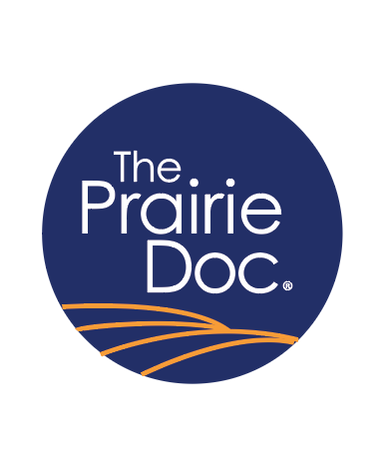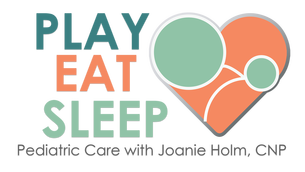|
Prairie Doc Perspective Week of December 17th, 2023
Unraveling Medical Myths By Jill Kruse, DO Myths are just stories we tell ourselves and others to make sense of the world around us. Myths convey beliefs or values and attempt to tell truths. In their effort to tell the truth, myths may exaggerate or misrepresent things. Sometimes this misrepresentation is innocent, while other times it is used as a tool to regulate or manipulate people. Myths can be used to give a sense of power and control over an overwhelming situation. Of the many types of myths, ones that deal with medicine are particularly common. A person’s life can feel out of control during times of sickness or injury. It is easy to feel powerless when one’s body is not feeling or acting normally. A story that helps explain why this is happening can be comforting. A story can assign blame to whom or what caused this. It can also serve as a lesson or a warning to others. In every myth there is usually some small bit of truth that makes it believable. Look at the myth “going out with wet hair will cause you to catch pneumonia”. It serves as a warning; if you do this, you could put your health in danger. Countless college students running late to early morning classes have tested this myth, including me. Science has proven that bacteria or viruses in the air entering your lungs cause pneumonia, not wet hair. If you Google “Does going out with wet hair make you sick” – you will get over 50 million results in less than a second. If you look long enough, you will find at least one page to support whatever stance you want to take on this. Mayo clinic and Cleveland clinic both have websites stating this is a myth. Some websites say “this is a myth, but…” They go on to hypothesize subtle correlations between having wet hair and lowering nasal passage temperatures just enough to increase susceptibility to a virus that may already be there. Of course, there will always be grandmothers who insist that they are right, regardless of what any doctor, institution, or the internet says. We live in an age of easy information. With so many answers and opinions, it is very easy to get overwhelmed and not know who or what to believe. This is why we at the Prairie Doc have strived to bring in experts each week to help give health information that is based on Science and built on Trust. We know that without science, we cannot bring you accurate information. More importantly, without trust, it really does not matter what we tell you. We hope that over the last twenty years we have earned that trust. Please continue to tune in to South Dakota Public Television, Facebook, or YouTube and ask those questions. We are here for you and truly look forward to discussing your questions each week. We will help you separate medical myth from fact so you can “Stay Healthy Out There”. Prairie Doc Perspective Week of December 10th, 2023
Urinalysis in patient care By Kelly Evans-Hullinger, MD Urinalysis, or testing of the urine, has ancient origins dating back to the time of Hippocrates and beyond. Although we have evolved in our methodology of studying the urine and our understanding of the meaning of its characteristics, we do still rely on urinalysis in making clinical diagnoses frequently in medicine. In centuries past, the tools of urinalysis were blunt and primarily involved human senses of sight, smell, and taste (yes, taste). Ancient physicians noted that sediment in the urine often correlated with fever, the sediment in question probably being white blood cells. Bubbles in the urine might portend kidney disease, which we know to be true if the bubbles are caused by excessive protein in the urine. And diabetes mellitus was generally known to be present in cases of excessive, sweet tasting urine. In modern laboratories, we test urine using chemical assays and by looking at urine sediment under a microscope. What might we be looking for when we ask our patients to provide a urine sample? Red blood cells can be present in a variety of conditions, including trauma to the urinary tract such as from infection or kidney stones, tumors of the urologic tract, and diseases affecting the microscopic structures of the kidney, among other things. White blood cells are more specific to urinary tract infection, though they can be seen in some other types of kidney injury as well. We look routinely for protein in the urine of patients with diabetes or known kidney disease. Protein in the urine is typically the first sign of kidney damage from chronic diseases like diabetes. And the amount of protein in the urine of a patient with chronic kidney disease can help us understand prognosis and whether certain medications are working. Glucose is found in the urine if a person has very high blood glucose (or if they are taking certain medications). Numerous other chemical tests of the urine can help us to diagnose selective medical conditions. As a physician in the modern era, luckily I have never tasted my patients’ urine like Hippocrates and his cohorts would have. But I do use urinalysis every day to help me diagnose and care for my patients. Prairie Doc Perspective Week of December 3rd, 2023
“A Date That Will Live in Infamy” By Major Anderson, RN December 7, 1941 is a “date that will live in infamy” as stated by President Roosevelt in his famous speech after the events of the Pearl Harbor bombing. That event let to the United States involvement in World War II. President’s Roosevelt’s speech was a call to arms and a declaration of war against this act of aggression by a foreign nation. He never wanted us to forget what happened. President Roosevelt concluded his speech by saying “With confidence in our armed forces, with the unbounding determination of our people, we will gain the inevitable triumph – so help us God.” Over eighty years later, President Roosevelt’s words still have impact and meaning. There will always be threats to our country, both foreign and domestic. There have always been those who have stood up to stand against these threats and defended their country. Those who have served risk their health and safety for the greater good. The men and women of the United States Armed Forces know that they may be called upon to give the ultimate sacrifice for their country. We must never forget those who suffered as Prisoners of War and the unknown fates of those who are still Missing in Action. Once back on the home front after the tours of duty are done and enlistments are complete, the service member will become a veteran, although transitioning back to civilian life can be challenging for some. Many veterans will carry with them some physical, mental, or emotional toll from their service. Whether it is hearing loss or PTSD, there are service connected injuries that need to be cared for. Some are very easy to spot, like a missing limb or a scar from shrapnel injury. Others are harder to see, such as survivor guilt, substance abuse, and chronic pain which can be hidden. According to a 2022 VA study the top five causes of death for veterans in order from greatest the least were accidents, suicide, cancer, cardiovascular disease, and homicide. As health care workers, it is our duty to care for these service men and women. We need to make sure that their physical and emotional health is cared for. That they have access to the resources earned through their service to their country. If we all work together we can ensure that no one is left behind. Our goal should be that veteran health care is not ignored. As President Roosevelt said, we need to have confidence in our armed forces and the unbounding determination of the people of this country. Together we can all make sure that those who served will never be forgotten. Major Anderson, RN is a nurse at the Brookings Health System in Brookings, South Dakota. Follow The Prairie Doc® at www.prairiedoc.org and on Facebook and instagram featuring On Call with the Prairie Doc® a medical Q&A show celebrating its 22nd season of health information based on science, built on trust, broadcast on SDPB and streaming live on Facebook most Thursdays at 7 p.m. central. |
Archives
July 2024
Categories |
 RSS Feed
RSS Feed


